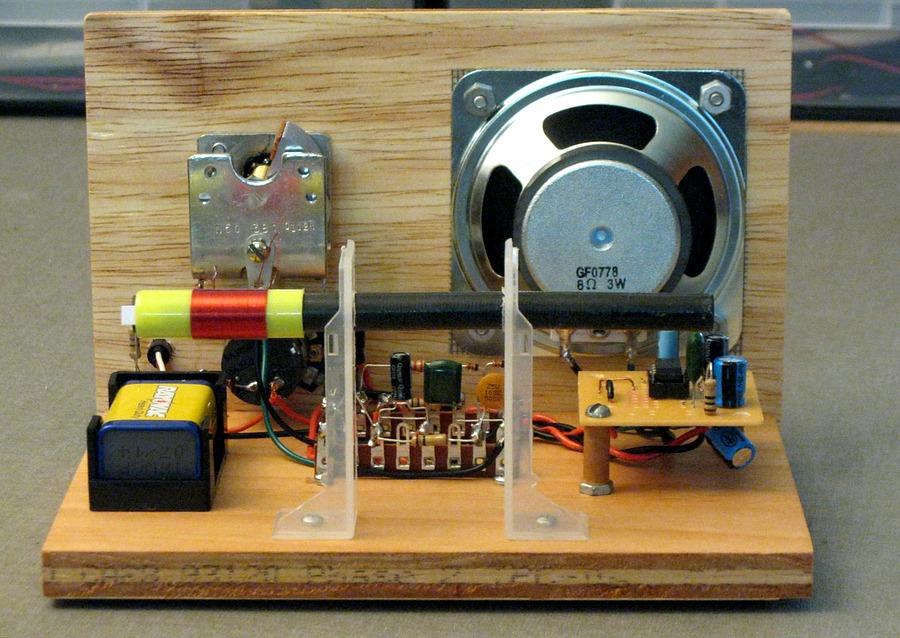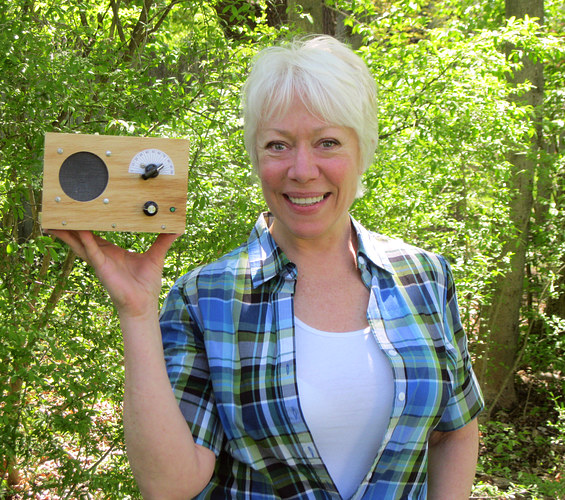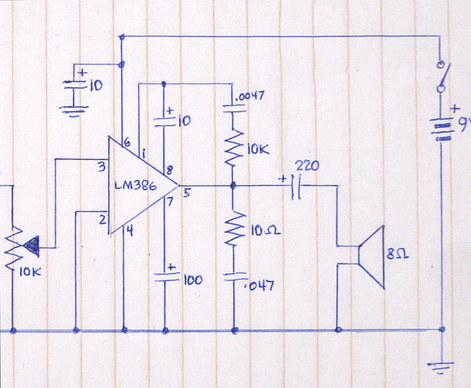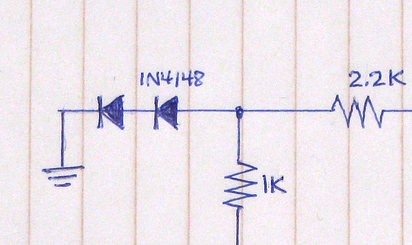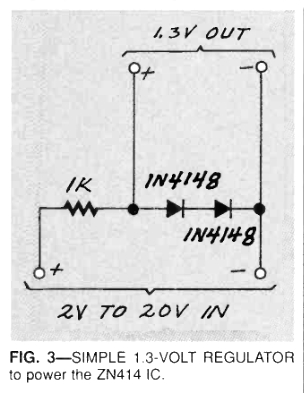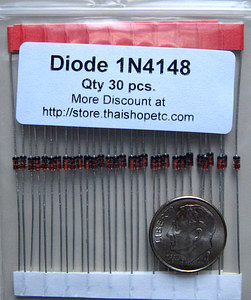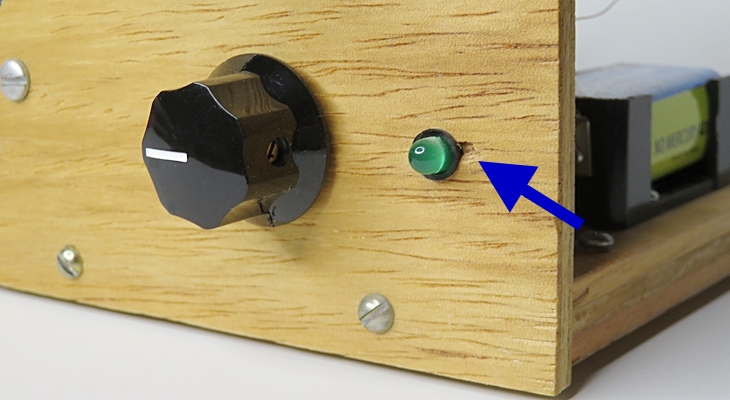|
As noted before, a bypass capacitor is needed
from pin 6 to ground. This can be any value from .01 to 220.
Pins 2 and 3 are interchangeable. However, the
spec sheet shows pin 2 with a minus sign and pin 3 with a plus sign,
so pin 2 was grounded in this case.
The 10 MFD capacitor between pins 1 and 8
boosts the gain. You can try leaving it out initially, then add it
if you need more volume.
The .0047 cap and 10K resistor from pin 1 to
pin 5 is a tone control and removes hiss. They can be omitted.
The 100 MFD cap on pin 7 is supposed to
"stabilize" the amplifier. It can be omitted. Pin 7 can be left open
or tied directly to ground.
The 220 MFD cap from pin 5 going to the
speaker is necessary, but the value isn't critical. Changing it will
alter the sound.
The 10 Ohm resistor and .047 mfd capacitor
from pin 5 to ground is called a Zobel network. This is used to make
the impedance of the loud speaker appear as a steady resistance to
the LM386, and prevents it from going into self oscillation.
The Ferrite Ferret works very well with the
parts shown in the schematic. The LM386 design is over 30 years old
and has been used in millions of commercially made radios. I
haven't turned the volume all the way up on the set because I'm
afraid of damaging the speaker. It's LOUD!
|
